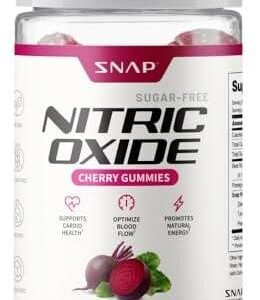In the realm of fitness, few tools offer the versatility and effectiveness of dumbbells. This seemingly simple piece of equipment has found a steadfast place in the arsenal of beginner and seasoned athletes alike, serving as a foundation for a wide array of strength training routines. As the modern fitness landscape continues to evolve, understanding how to leverage dumbbells effectively can be the key to unlocking your full potential and achieving your fitness goals.
In this comprehensive guide, we will delve into the multifaceted world of dumbbell training, exploring the physiological benefits of strength exercises, the mechanics of proper form, and the diverse range of workouts suitable for all fitness levels. Whether you are looking to build muscle, enhance endurance, or improve your overall physical performance, dumbbells offer unparalleled adaptability, allowing you to tailor your regimen to your specific needs.
We will address the science behind muscle growth and recovery, the importance of progressive overload, and how to integrate dumbbells into your existing workout routine. Additionally, we will provide expert tips and curated workout plans designed to maximize your efficiency and results while minimizing the risk of injury. By the end of this guide, you will not only have a deeper appreciation for the power of dumbbell training but also the knowledge necessary to elevate your fitness journey to new heights. Join us as we unlock the potential of dumbbell training and embark on a transformative path toward a stronger, healthier you.
Table of Contents
- Understanding the Fundamentals of Dumbbell Training for Optimal Performance
- Exploring Effective Techniques and Variations for Targeted Muscle Engagement
- Creating a Balanced and Progressive Workout Plan to Enhance Strength and Endurance
- Incorporating Recovery Strategies and Nutritional Considerations to Support Your Training Goals
- The Conclusion
Understanding the Fundamentals of Dumbbell Training for Optimal Performance
Dumbbell training offers a versatile approach to strength development, enabling individuals to target specific muscle groups effectively. One of the primary advantages of using dumbbells is the independence of movement they provide, allowing each limb to move freely. This encourages muscle balance and co-activation of stabilizing muscles, which is crucial for avoiding injuries and enhancing overall athletic performance. Unlike machines that guide movement, dumbbells require greater control and coordination, leading to improved neuromuscular efficiency.
To get the most out of your dumbbell workouts, incorporating a variety of exercises that engage different muscle groups is essential. This not only promotes balanced muscle development but also keeps workouts engaging. Here are some fundamental exercises to include in your regimen:
- Dumbbell Bench Press: Targets the chest, shoulders, and triceps.
- Dumbbell Squats: Strengthens legs and engages the core.
- One-Arm Dumbbell Row: Focuses on back muscles and biceps.
- Dumbbell Lunges: Works on leg strength and stability.
- Dumbbell Shoulder Press: Enhances shoulder strength and endurance.
When planning your workout, consider your sets and repetitions based on your fitness goals. Here’s a simple table for reference:
| Goal | Sets | Reps |
|---|---|---|
| Strength | 3-5 | 3-6 |
| Hypertrophy | 3-4 | 6-12 |
| Endurance | 2-3 | 12-20 |
Exploring Effective Techniques and Variations for Targeted Muscle Engagement
When it comes to optimizing muscle engagement, understanding how to manipulate your dumbbell routines is essential. By incorporating various techniques, you can specifically target different muscle groups for enhanced strength and definition. Supination and pronation of the forearms during exercise, for example, can significantly alter the focus on the biceps and forearms, increasing overall muscle activation. Additionally, pausing at the peak contraction of an exercise, such as during a dumbbell curl, allows for prolonged tension on the targeted muscles, promoting better hypertrophy. Other techniques include implementing isolated movements or employing compound exercises that engage multiple muscle groups simultaneously, giving you the versatility needed to foster muscle growth and endurance.
In a structured workout routine, consider variations that incorporate different angles and grip positions. Adjusting your body position—whether standing, seated, or bent over—can influence muscle engagement. Below are a few effective variations to incorporate into your training regimen:
- Incline Dumbbell Press: Targets the upper portion of the chest.
- Dumbbell Rows: Effective for your back and biceps.
- Single-Arm Dumbbell Swing: Engages shoulders and core stability.
- Dumbbell Sumo Squat: Emphasizes the inner thighs and glutes.
Using a structured approach to your dumbbell exercises can be formatted into a simple weekly plan that balances muscle engagement. Below is a sample weekly breakdown:
| Day | Focus | Exercises |
|---|---|---|
| Monday | Chest & Triceps | Incline Press, Tricep Kickbacks |
| Wednesday | Back & Biceps | Dumbbell Rows, Curls |
| Friday | Legs & Shoulders | Sumo Squats, Shoulder Press |
This format not only ensures balanced development across muscle groups but also allows for essential rest and recovery, further maximizing the effectiveness of your training sessions.
Creating a Balanced and Progressive Workout Plan to Enhance Strength and Endurance
To cultivate a well-rounded workout regimen that boosts both strength and endurance, it is essential to incorporate a variety of exercises targeting multiple muscle groups. A balanced fitness plan should include compound movements, which engage several joints and muscles effectively. Some recommended exercises include:
- Dumbbell Squats: Enhances leg strength and core stability.
- Dumbbell Deadlifts: Focuses on posterior chain development.
- Overhead Dumbbell Press: Builds shoulder and arm strength.
- Dumbbell Bent-over Rows: Strengthens upper back and arms.
Incorporating endurance training into your workout is equally essential to improve stamina. Aim for a mix of moderate and high-intensity workouts throughout the week. Here’s a simple progression table to structure your training:
| Week | Focus | Sets & Reps |
|---|---|---|
| 1-2 | Foundation Building | 3 sets of 10-12 reps |
| 3-4 | Strength & Endurance Blend | 4 sets of 8-10 reps |
| 5-6 | Peak Performance | 5 sets of 5-6 reps + HIIT |
Incorporating Recovery Strategies and Nutritional Considerations to Support Your Training Goals
To optimize your training, it’s essential to integrate effective recovery strategies alongside your workout regimen. Recovery isn’t merely a passive phase; it’s an active process that involves restoration, rejuvenation, and rebuilding the body after intense dumbbell workouts. Incorporating practices such as:
- Active Recovery: Engage in low-intensity activities like walking or cycling to promote blood flow.
- Stretching and Foam Rolling: These tools can significantly reduce muscle soreness and improve flexibility.
- Sleep Hygiene: Aim for 7-9 hours of quality sleep each night to support muscle repair and overall recovery.
Understanding the importance of recovery can lead to enhanced performance and a reduced risk of injury, setting the stage for continual improvement in your strength training.
Nutritional considerations play a pivotal role in recovery and performance enhancement. A well-balanced diet not only fuels your workouts but also aids in the repair and growth of muscle tissue. Focus on incorporating:
- Proteins: Essential for muscle repair; opt for foods like chicken, fish, beans, and Greek yogurt.
- Complex Carbohydrates: Needed to replenish energy stores; think brown rice, oats, and sweet potatoes.
- Healthy Fats: Support overall health and hormone production; include avocados, nuts, and olive oil.
Consider following a post-workout nutrition window, ideally within 30-60 minutes after exercising, to maximize glycogen replenishment and muscle protein synthesis. Below is a simplified table outlining ideal post-workout food pairings:
| Food Pairing | Benefits |
|---|---|
| Chicken Breast + Quinoa | High protein and carbs for muscle recovery. |
| Greek Yogurt + Fruit | Rich in protein and antioxidants for recovery. |
| Eggs + Spinach | Complete protein with vitamins for muscle growth. |
The Conclusion
maximizing your workout with dumbbell training is not merely about lifting weights; it’s an intricate blend of technique, strategy, and consistent effort. Throughout this comprehensive guide, we’ve explored the various dimensions of dumbbell exercises, from understanding the fundamental movements to structuring an effective workout regimen that aligns with your fitness goals.
Remember, the key to successful training lies in not only the choice of exercises but also the precision of your form, the thoughtful incorporation of progressive overload, and the importance of recovery. Whether you aim to build strength, increase endurance, or enhance overall fitness, dumbbells offer unparalleled versatility and adaptability to suit your individual needs.
As you embark on your journey of maximizing your workouts, prioritize safety and listen to your body. Consider tracking your progress and making adjustments to your routine as necessary to ensure continual improvement. With dedication and the right approach, you can unlock the potential of your dumbbell training and achieve remarkable results.
We encourage you to embrace the challenge and enjoy the process. Remember, every small step contributes to your overarching fitness journey, and with dumbbells, the possibilities are truly limitless. Equip yourself with the knowledge gleaned from this guide and look forward to each workout as an opportunity to enhance your strength, resilience, and overall well-being. Here’s to your success in reaching new heights in your fitness endeavors!





